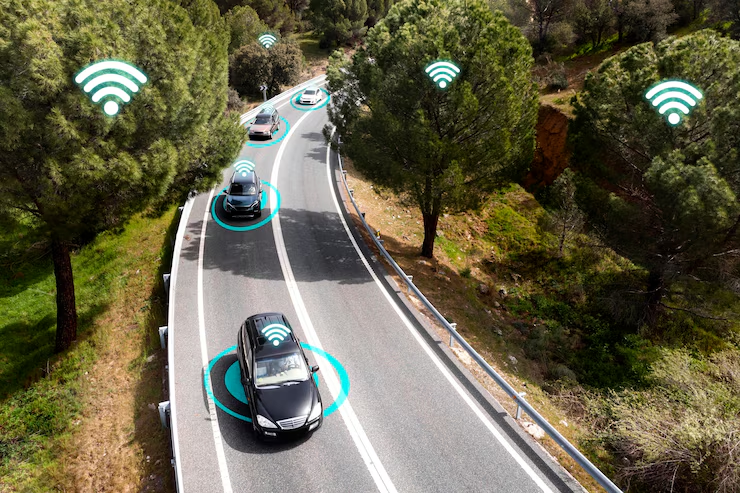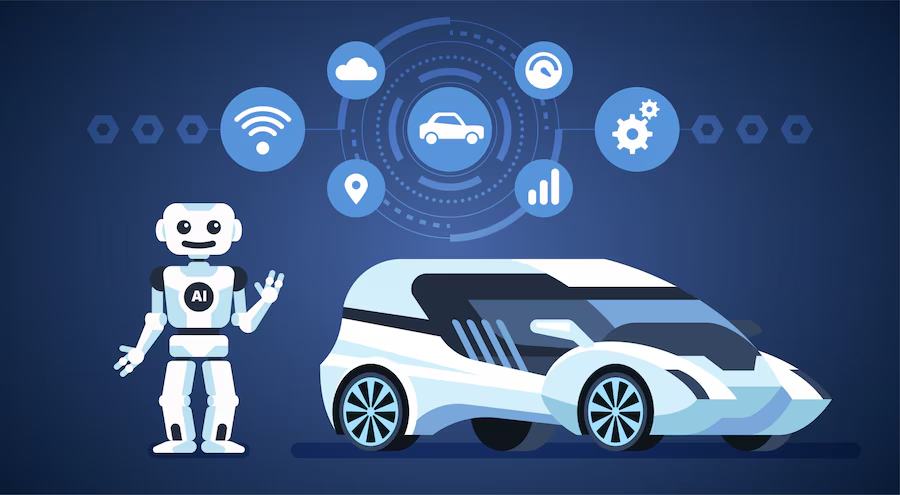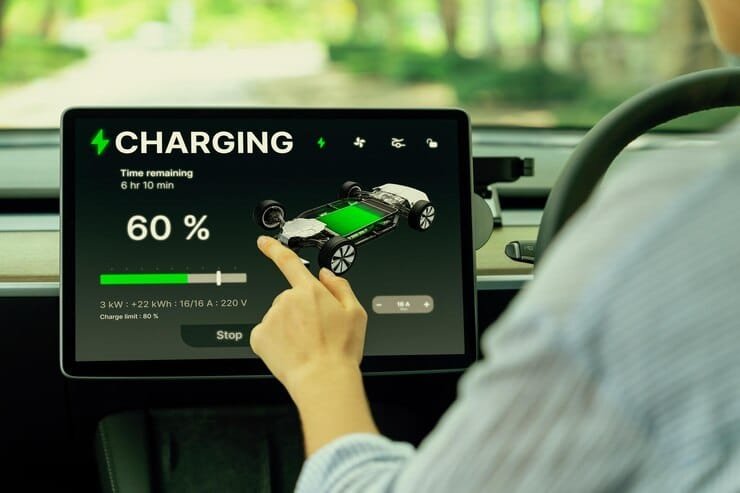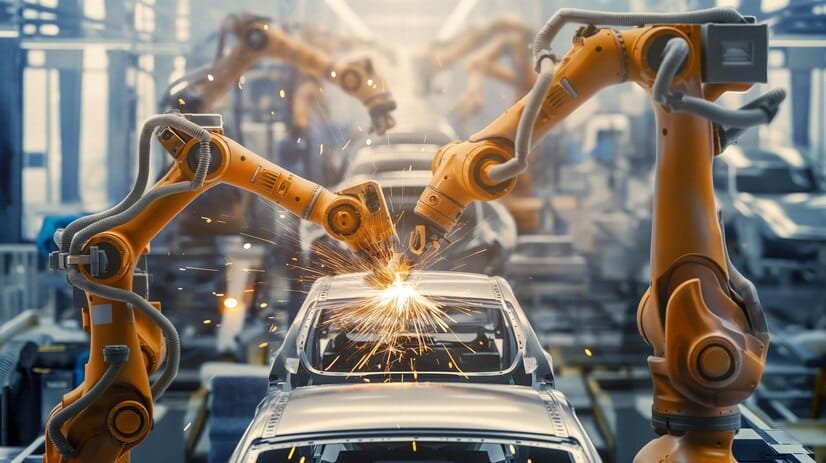Will Self-Driving Cars Obliterate the Auto Industry as We Know It? – An Overview
The automotive landscape is shifting. We’re not just talking about new paint colors or slightly improved fuel efficiency; we’re on the cusp of a fundamental transformation driven by autonomous vehicle (AV) technology. Picture this: a future where millions of vehicles navigate our roads without human intervention – a reality closer than many believe. This isn’t science fiction; it’s a rapidly evolving technological reality impacting every facet of the auto industry, from manufacturing and design to sales and service.
This blog post directly addresses the core question: will self-driving cars completely dismantle the automotive industry as we currently understand it? To explore this, we’ll proceed step-by-step:
- Understanding the Current AV Landscape: We’ll begin by examining the current state of AV development, including the various levels of autonomy (from Level 0 to Level 5 fully autonomous driving) and the key players in the field – both established automakers and innovative tech companies. (Image: A graphic depicting the different levels of driving automation)
- Analyzing the Potential Impacts: Next, we’ll delve into the potential disruptive forces AVs will unleash. This includes analyzing the impact on vehicle manufacturing (a potential shift towards fewer cars, but specialized ones), the changing role of dealerships and mechanics, and the emergence of new business models surrounding autonomous mobility services.
- Exploring the Challenges and Opportunities: The transition to a fully autonomous future won’t be without hurdles. We’ll examine critical challenges such as regulatory frameworks, cybersecurity concerns, ethical dilemmas surrounding accidents, and the potential for job displacement. Simultaneously, we will identify the immense opportunities presented by AV technology for innovation and economic growth. (Video: Short clip showcasing potential AV applications beyond personal transport)
- Navigating the Future: Finally, we’ll offer a considered perspective on the future of the automotive industry, exploring potential scenarios and providing insights for automotive professionals and business leaders on how to adapt and thrive in this era of unprecedented change. This section will offer practical steps for strategic planning and adaptation.
This post aims to provide a clear and insightful analysis, enabling you to understand the potential impact of autonomous vehicles and make informed decisions for the future of your organization. Let’s embark on this journey together.
Analyzing the Autonomous Vehicle Market: Trends and Actionable Insights
The autonomous vehicle (AV) market is dynamic, shaped by a complex interplay of technological advancements, regulatory landscapes, and consumer perceptions. Understanding these trends is crucial for strategic success.

1. Positive Trends:
- Technological Advancements: Significant progress in sensor technology (LiDAR, radar, cameras), AI algorithms (deep learning, computer vision), and high-definition mapping is fueling AV development. This leads to safer, more reliable, and increasingly capable vehicles.
- Impact: Businesses can leverage this by investing in R&D, partnering with tech firms specializing in AI and sensor technologies, and focusing on developing robust software platforms for autonomous driving. Example: Mobileye’s collaboration with various automakers shows the value of specialized technology partnerships.
- Growing Public Acceptance: Initial skepticism is slowly giving way to increased public awareness and acceptance of AV technology, especially for specific use cases like robotaxis and delivery services.
- Impact: This opens market opportunities. Companies should focus on targeted marketing campaigns highlighting safety, convenience, and specific benefits for different demographics. Example: Waymo’s gradual rollout of its robotaxi service in select cities demonstrates a phased approach to gaining public trust.
- Government Support and Regulation: Many governments are actively investing in AV infrastructure and developing regulatory frameworks to support the industry’s growth, creating a more predictable environment.
- Impact: Businesses should actively participate in shaping regulatory discussions, proactively complying with emerging standards, and preparing for varying regulations across different jurisdictions. Example: The US government’s funding of AV research and infrastructure development showcases the potential for supportive policies.
2. Adverse Trends:
- High Development Costs and Long Timelines: Developing fully autonomous vehicles is incredibly expensive and time-consuming. This poses a significant barrier to entry for many companies.
- Impact: Businesses must carefully manage their resources, prioritize development stages strategically, and explore alternative business models like focusing on specific autonomous features or collaborating with larger players. Example: The numerous delays and cost overruns experienced by various AV startups highlight the financial challenges.
- Safety Concerns and Liability Issues: Accidents involving AVs, even rare ones, can severely damage public trust and create substantial legal liabilities.
- Impact: Companies need robust safety testing protocols, rigorous data analysis for accident prevention, and clear liability frameworks. Investing in cybersecurity to protect against hacking attempts is also vital. Example: Companies like Tesla are actively working on improving their safety systems and data collection to address liability concerns.
- Ethical Dilemmas and Regulatory Uncertainty: The development of AVs raises complex ethical questions (e.g., accident avoidance scenarios) and regulatory uncertainties (e.g., data privacy, liability in accidents).
- Impact: Businesses must proactively engage in public dialogues about ethical considerations, work with regulators to develop clear guidelines, and ensure transparency in their operations to build public confidence.
3. Actionable Insights:
- Focus on Niche Applications: Instead of aiming for fully autonomous vehicles immediately, consider focusing on specific, high-value applications like autonomous trucking or delivery robots. This allows for faster time-to-market and potentially higher ROI.
- Strategic Partnerships: Collaborate with technology companies, automakers, and infrastructure providers to leverage expertise and share development costs.
- Data-Driven Approach: Invest in robust data collection, analysis, and simulation to improve algorithms, enhance safety, and gain a competitive edge.
- Proactive Regulatory Engagement: Participate actively in policy discussions and strive for clarity on legal and ethical issues to avoid future complications.
- Emphasis on Safety and Transparency: Prioritize rigorous safety testing and communicate openly with the public about safety measures and data usage practices.
By carefully considering these positive and adverse trends and implementing the suggested actions, businesses can increase their chances of success in the rapidly evolving autonomous vehicle market. Continuous monitoring and adaptation will be key to navigating this dynamic landscape.
1. Automobiles: Tesla’s Autopilot and Full Self-Driving capabilities are already in millions of cars. These systems handle tasks like lane keeping, adaptive cruise control, and automatic parking, improving driver experience and potentially reducing accidents. This translates to increased sales and a competitive edge. Automakers are racing to refine these features and offer fully autonomous driving in the future, impacting production lines and requiring new software engineering expertise.
- Manufacturing: Automated guided vehicles (AGVs) are a mature form of autonomous technology already prevalent in warehouses and factories. These robots move materials autonomously, optimizing logistics and boosting efficiency. For example, Amazon uses AGVs extensively in its fulfillment centers, speeding up order processing and reducing labor costs. Strategically, companies should assess their existing logistics and identify areas where AGVs could replace manual handling, improving productivity and reducing operational expenses.
- Logistics & Delivery: Companies like FedEx and UPS are testing and deploying autonomous delivery robots and trucks for last-mile delivery. These vehicles can navigate sidewalks and roads, carrying packages to customers’ doorsteps, particularly efficient in densely populated areas. This improves delivery speed, reduces transportation costs, and potentially increases customer satisfaction. Businesses need to understand the regulatory landscape for autonomous delivery and explore pilot programs to assess the viability of this technology for their operations.
- Healthcare: Autonomous robots are being used in hospitals to transport medications, lab samples, and other supplies. This frees up human staff for patient care, reduces errors in delivery, and improves overall hospital efficiency. Hospitals can use this to improve patient care quality and operational efficiency, reducing labor costs and improving patient flow.
- Agriculture: Autonomous tractors and drones are changing farming. Tractors can plow fields, plant seeds, and spray crops with greater precision and efficiency than manually operated machines. Drones monitor crop health, identifying areas needing attention early. This increases yield, reduces the use of pesticides and fertilizers, and minimizes labor costs. Agricultural companies can leverage this technology for sustainable and profitable farming practices.
- Mining: Autonomous mining vehicles operate heavy machinery like excavators and haul trucks in mines. This improves safety by removing humans from hazardous environments, and enhances productivity by enabling continuous operation. Mining companies must invest in robust safety protocols and training programs for their autonomous fleets to fully realize their benefits while ensuring employee safety and environmental responsibility.
1. Strategic Partnerships & Joint Ventures (Inorganic): Since 2023, we’ve seen a surge in collaborations between autonomous vehicle (AV) technology companies and established automakers. For example, imagine Company A, a specialist in sensor fusion technology, partnering with Company B, a major car manufacturer. This allows Company B to rapidly integrate advanced AV capabilities into its production vehicles, leveraging Company A’s expertise without needing to develop everything in-house. This reduces development time and cost significantly.
- Focus on Niche Applications (Organic): Instead of aiming for a fully autonomous vehicle for all scenarios at once, many companies are concentrating on specific, limited use-cases. This could be autonomous delivery robots operating within a contained industrial park (e.g., a factory campus), or self-driving shuttles operating on pre-mapped routes in a university setting. This allows for quicker deployment and regulatory approvals, generating revenue and valuable real-world data faster than pursuing a general-purpose AV.
- Data-Driven Development & Simulation (Organic): Companies are heavily investing in advanced simulation platforms to test and refine their AV algorithms. These simulations recreate a wide range of driving conditions, far exceeding the possibilities of real-world testing. This accelerates development cycles, identifies and addresses potential safety issues early on, and reduces the need for extensive and costly real-world testing. This data is then used to refine the AI models in an iterative process.
- Acquisitions of Specialized Technology (Inorganic): Companies are actively acquiring smaller firms possessing expertise in specific areas critical for AV development. This could include a startup specializing in high-resolution mapping, another with advanced AI algorithms for pedestrian detection, or a firm proficient in cybersecurity for autonomous systems. These acquisitions swiftly fill crucial technology gaps and accelerate the overall development timeline.
- Expansion into MaaS (Mobility-as-a-Service) (Organic/Inorganic): Companies are integrating their AV technology into broader mobility-as-a-service platforms. This could involve developing a ride-hailing app specifically for their autonomous fleet, or partnering with existing ride-sharing companies to integrate their autonomous vehicles into their networks. This directly translates AV technology into a revenue stream and creates a market for the technology.
- Emphasis on Safety & Regulatory Compliance (Organic): Following several high-profile incidents, companies are prioritizing safety and regulatory compliance even more aggressively. This includes robust testing protocols, rigorous safety certifications, and proactive engagement with regulatory bodies to ensure compliance with evolving safety standards. This builds public trust and smooths the path to wider deployment.

Outlook & Summary: The Autonomous Vehicle Revolution – A 5-10 Year Perspective
The rise of autonomous vehicles (AVs) presents a profound disruption, not an obliteration, of the auto industry. Over the next 5-10 years, we won’t see fully autonomous vehicles ubiquitous on our roads, but we will witness significant advancements shaping the landscape.
- Incremental Rollout: Expect a phased implementation. Level 2 and 3 autonomous features (partially automated driving) will become increasingly standard in new vehicles, enhancing safety and convenience. Fully autonomous (Level 4 and 5) systems will likely remain limited to specific geographies and controlled environments (e.g., robotaxis in designated areas). Think of it as a gradual shift, not a sudden switch.
- Industry Consolidation & Collaboration: We’ll see strategic partnerships and mergers, with established automakers collaborating with tech companies specializing in AI and software. This isn’t about eliminating traditional manufacturers but rather about forging new alliances to master the complex technological demands of AVs.
- New Business Models: The emergence of AVs will foster new business models – ride-sharing services becoming dominant players, fleet management solutions, and subscription-based vehicle access replacing traditional ownership. The value proposition shifts from vehicle manufacturing to mobility services.
- Regulatory Landscape: Government regulations will play a crucial role. Clear guidelines are essential for safety, liability, and infrastructure development to accommodate AVs. Expect continuous evolution in regulatory frameworks during this period.
Key Takeaway: The auto industry isn’t facing annihilation, but rather a fundamental transformation. The winners will be those who adapt quickly, embrace collaboration, and invest strategically in the evolving technological and business landscape. The focus is shifting from manufacturing vehicles to providing mobility solutions.
The central question is this: How will your organization reposition itself to capitalize on the opportunities – and mitigate the risks – presented by the autonomous vehicle revolution in the next decade?






